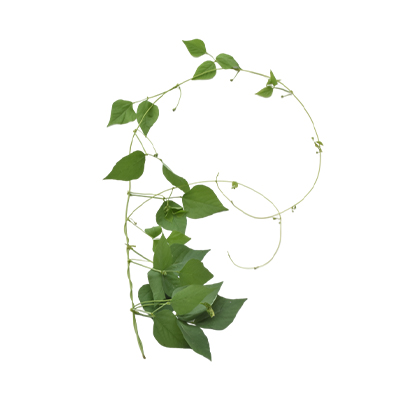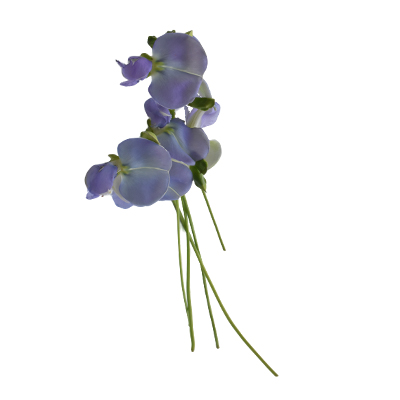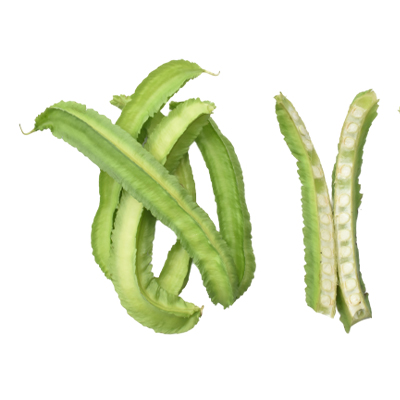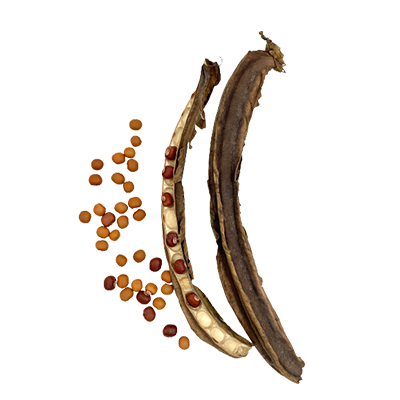Winged bean
Psophocarpus tetragonolobus (L.) DC.
Fabaceae
Location in our garden
Vegetable
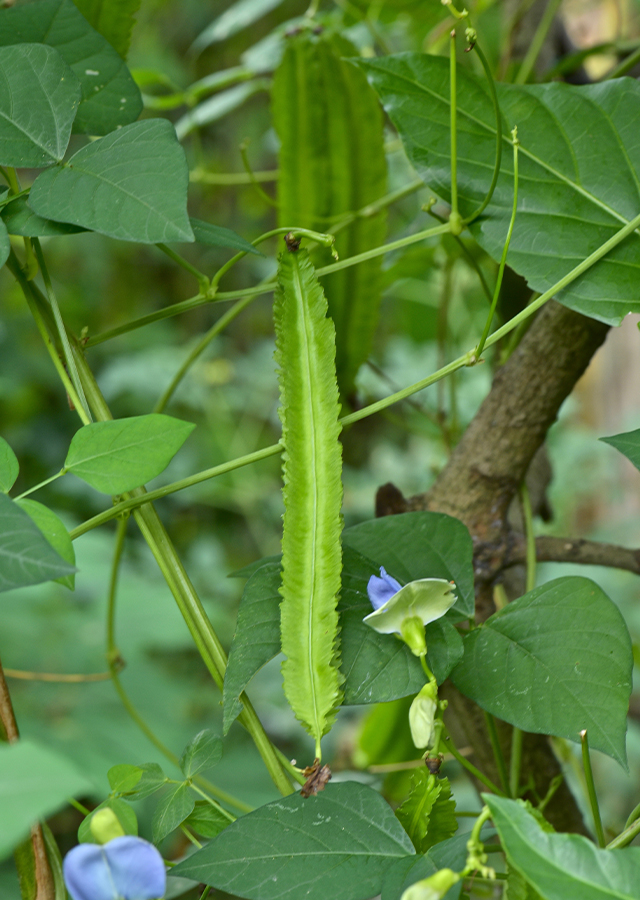
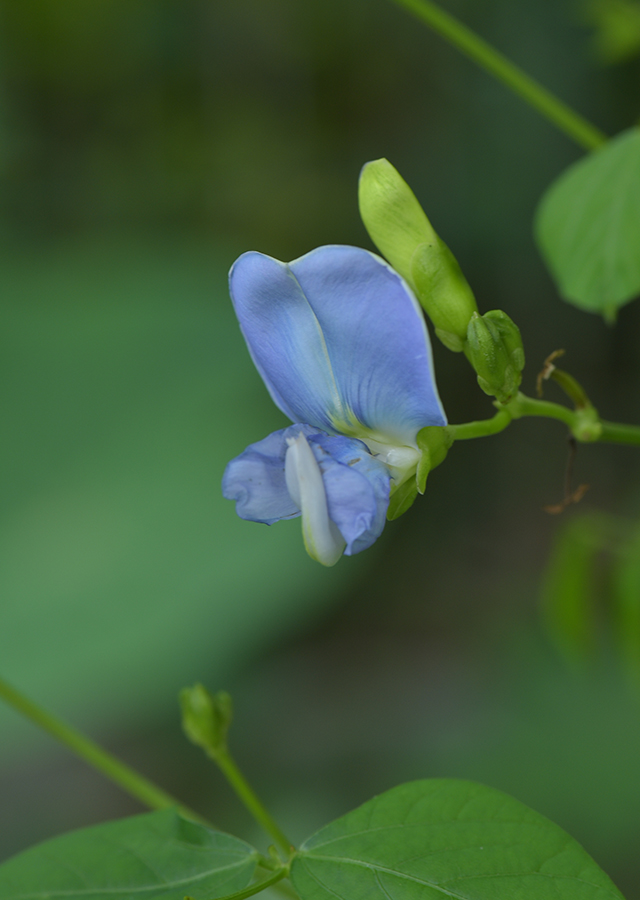
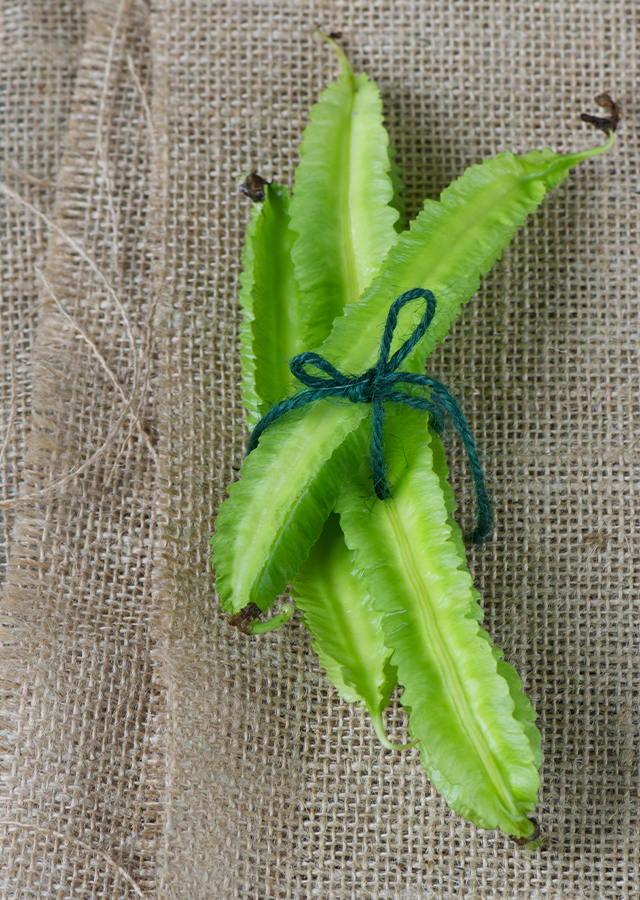
Synonym
Botor tetragonoloba (L.) Kuntze
Dolichos ovatus Graham
Dolichos tetragonolobus L.
Habitus
Climbers. A climbing, twining perennial herbaceous vine, 2-4 m long
Part Used
Young pods
Leaves
Seeds
Roots
Growing Requirements
Full Sunshine
Habitat
Terrestrial
Overview
Winged bean is a very beneficial, multipurpose plant grown as a food plant in the tropics and sub-tropics. There are many varieties and strains in New Guinea and South-East Asia, particularly Indonesia, that indicate that they are the center of winged bean diversity. It is a very good green manure with excellent nitrogen fixing properties, producing a higher nodular weight per plant than any other member of the Fabaceae, used for soil improvement and regeneration.
Vernacular Names
Si jiao dou (Chinese), Ketjipir (Dutch), Haricot ailé (French), Flügelbohne (German), Charkoni sem (India), Sikaku mame (Japanese), Kacang belimbing (Malaysia), and Kabey or Sigarilya (Tagalog-Philippines).
Agroecology
In the mild, humid equatorial zone and humid tropics with day temperatures of 25-32 °C and night temperatures above 18 °C, and with average annual rainfall of 1,500-3,000 mm, Winged bean prospers growth better. It grows from sea level up to an elevation of 2,200 mm, but is vulnerable to frost. With a pH above 5.5, it thrives on a variety of well-drained, friable soil types and is intolerant to water logging
Morphology
- Roots - fleshy, fusiform, tuberous.
- Stem - ridged and glabrous.
- Leaves - trifoliolate on long petioles (up to 12 cm long) grooved on the upper side and with a pulvinus at the base.
- Flowers - bisexual, papilionaceous, and of varying colors pale sky blue, some are white and others are reddish-brown, depending on cultivars.
- Fruits - pod, smooth, linear, oblong, curved to long flexible, 15-30 cm long and 2,5-3,5 cm thick, with four longitudinal or sinuous leafy serrate-dentate wings. When fully grown, they turn brown and split open, often with a loud popping noise.
- Seeds - 5 -20 per pod, subglobose about 0.5–1 cm across, white, yellow, brown, or black, or mottled with a small aril and non-endospermous.
Cultivation
Typically propagated by seed, but tubers can be used as well.
Chemical Constituents
Polyphenols, flavonoids, tannins, phytate, lectins, phytoglutenins, cyanogenic glycosides, saponins, terpenoids, steroids.
Traditional Medicinal Uses
Medicinal uses
- The plant helps stop premature aging. Lowers migraines and headaches.
- It guarantees a safe pregnancy. Sprains and inflammation remedy.
- Support to protect against issues of vision such as cataracts and glaucoma.
- The loss of weight (as one of the best sources of fiber).
- Its phosphorous content is capable of removing minor health issues such as muscle fatigue, numbness, tiredness, and other related conditions. Please help avoid asthma and diabetes. Improves immunity and battles colds.
Traditional Uses
- The leaves were used in a compound lotion for small pox in Peninsular Malaysia.
- Root as a poultice to treat vertigo in Myanmar.
- The pods and the edible tubers are considered roborant in New Guinea (tonic). To treat skin sores, leaves and seeds are eaten (boils and ulcers).
Part Used
Reference Sources
- Fern, Ken. (2019). Useful Tropical Plants Database. Psophocarpus tetragonolobus (L.) DC. http://tropical.theferns.info/viewtropical.php?id=Psophocarpus+tetragonolobus 27-08-2020.
- Health Benefits times. (No date). Winged bean (Psophocarpus tetragonolobus). https://www.healthbenefitstimes.com/winged-bean/ on 27-08-2020.
- Ibuki, F. Kan, K.K. Kanamori, M. (Kyoto Prefectural Univ. (Japan). Faculty of Agriculture) Kotaru, M. et al. (1983). Chemical Composition of Winged Bean (Psophocarpus tetragonolobus) Varieties. Journal of Nutritional Science and Vitaminology. 29 巻 (1983) 5 号. https://doi.org/10.3177/jnsv.29.621. https://www.jstage.jst.go.jp/article/jnsv1973/29/5/29_5_621/_article/-char/ja/ on 27-08-2020.
- Lim, T.K. (2012). Edible Medicinal And Non-Medicinal Plants: Vol. 2, Fruits. Springer. DOI 10.1007/978-94-007-1764-0_1. (pp. 867-878).
- PROTA. (2015). Plant Resources of Tropical Africa. Psophocarpus tetragonolobus. https://uses.plantnet-project.org/en/Psophocarpus_tetragonolobus_(PROTA) 27-08-2020.
